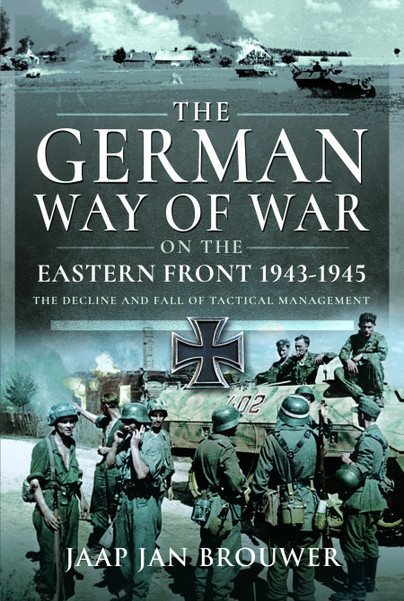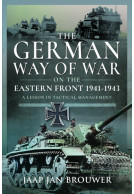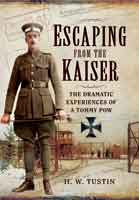Google Books previews are unavailable because you have chosen to turn off third party cookies for enhanced content. Visit our cookies page to review your cookie settings.
The German Way of War on the Eastern Front, 1943-1945 (Hardback)
The Decline and Fall of Tactical Management
By
Jaap Jan Brouwer
Imprint: Pen & Sword Military
Pages: 224
Illustrations: 60 mono illustrations
ISBN: 9781399032995
Published: 25th September 2024
Imprint: Pen & Sword Military
Pages: 224
Illustrations: 60 mono illustrations
ISBN: 9781399032995
Published: 25th September 2024
You'll be £17.50 closer to your next £10.00 credit when you purchase The German Way of War on the Eastern Front, 1943-1945. What's this?
+£4.99 UK Delivery or free UK delivery if order is over £40
(click here for international delivery rates)
Order within the next 6 hours, 19 minutes to get your order processed the next working day!
Need a currency converter? Check XE.com for live rates
(click here for international delivery rates)
Order within the next 6 hours, 19 minutes to get your order processed the next working day!
Need a currency converter? Check XE.com for live rates
| Other formats available - Buy the Hardback and get the eBook for £1.99! | Price |
|---|---|
| The German Way of War on the Eastern… ePub (55.5 MB) Add to Basket | £14.99 |
Early 1943 marked a turning point in the battle on the Eastern Front. After the devastating defeat at Stalingrad, the German army was no longer able to take the initiative and control the battle. In the following years, despite tactical victories, the German army would be gradually pushed back until Soviet units eventually reached Berlin and captured the Reichstag. In the meantime, both enemies had learned a great deal and new weapons were rapidly introduced onto the battlefield. On 8 May 1945, this bloody confrontation between the two giants ended in the unconditional surrender of Germany and a new geopolitical equilibrium was created.
This titanic battle is illustrated with witness accounts from generals, soldiers and civilians. Attention is not only paid to the course of the battle, but also to the tactics and organisational dimensions of the armies involved, the challenges of the vastness of the country, the dilemmas for civilians caught between the fighting parties and the flight of millions of Germans to the West in an attempt to escape from the atrocities of the Soviet army. The book also considers the role of the Reichsbahn in the field of logistics, and the importance of the innovation and production capacity of both armies. In also pays attention to the origins of the Cold War that was to follow this confrontation and which would last until 1989.
Historical Miniatures Gaming Society, July 2024
About Jaap Jan Brouwer
Jaap Jan Brouwer studied Medicine, Law and History at Groningen University in The Netherlands. He has been a management consultant for more than 30 years and has written books on general management topics, health care, the Dutch industry and on military organisations.
He has a thorough knowledge and expertise on organisations and warfare, particularly the Second World War. His way of looking at military organisations provides a new, intriguing context and introduces new dynamics in the history of warfare, allowing the reader to understand why military organisations acted and reacted as they did. More information on the book can be found at www.auftragstaktik.eu.
More titles by Jaap Jan Brouwer
Customers who bought this title also bought...
Other titles in Pen & Sword Military...

















